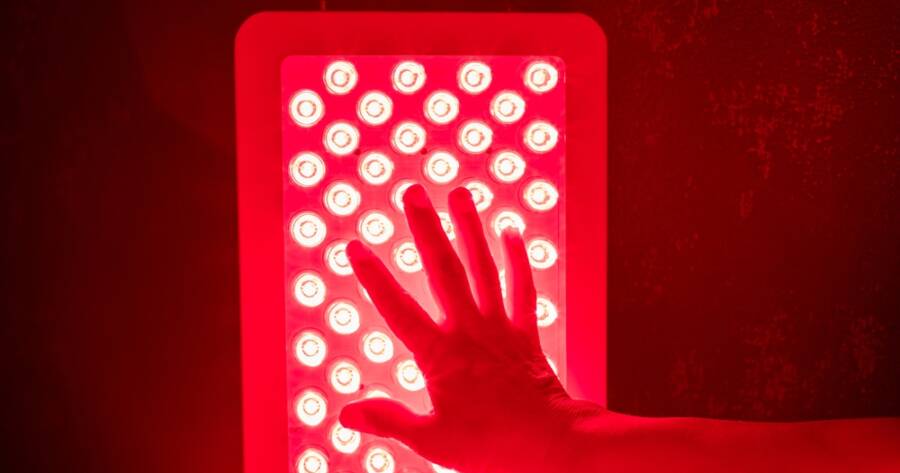Red light therapy has gained traction across the U.S. as a non-invasive way to support skin health, muscle recovery, and overall wellness. Once only found in clinics and spas, red light devices are now widely available for home use. But with so many options on the market, it can be hard to know which devices actually deliver results. Whether you’re hoping to reduce inflammation, improve skin texture, or recover after a workout, understand how to identify at-home red light tools that truly work.
What Is Red Light Therapy?
Red light therapy, also called low-level laser therapy (LLLT) or photobiomodulation, uses specific wavelengths of light—usually in the red and near-infrared spectrum—to stimulate cellular activity. These wavelengths are absorbed by the mitochondria in cells, where they help boost energy production (ATP), reduce oxidative stress, and encourage tissue repair.
In simple terms, red light therapy helps your cells work better. This can lead to a wide range of potential benefits, including faster muscle recovery, improved skin tone, reduced joint pain, and better circulation.
What makes red light therapy unique is that it doesn’t generate heat the way traditional infrared saunas do. It works at a lower intensity and is safe for regular, even daily use when done correctly.
Key Features That Make a Device Effective
Not all red light devices are built the same. Some look impressive but don’t deliver the intensity or wavelength needed for real benefits. To get the most out of red light therapy at home, look for the following features:
Wavelength matters. Effective devices typically emit light between 630 and 850 nanometers (nm). Red light around 630–660nm is ideal for skin-level treatments, while near-infrared light in the 810–850nm range penetrates deeper, reaching muscles and joints.
Power output matters too. A device’s irradiance—how much light is delivered to the skin—is key for results. A good device offers at least 20–30 mW/cm² at the surface, with even better results above that level. Weak output means longer sessions with less noticeable change.
Coverage area and distance. Smaller devices might work for targeted use (like the face or a knee), while panel-style devices can treat the full body. Always check the manufacturer’s recommended distance from the skin — typically 6 to 18 inches — and whether the device can maintain effective intensity at that range.
Timer and safety settings. Basic devices often have a single on/off button, while higher-end models include timers, auto shut-off features, and adjustable light settings. These extras aren’t necessary, but they add convenience and safety, especially for longer sessions.
Top Home Devices That Deliver Results
Among the many red light therapy tools available in the U.S., a few brands and models consistently stand out for reliability, performance, and clinical support.
Joovv is widely known in the red light space. Their panel-style devices use medical-grade LEDs and are designed for full-body use. They offer dual wavelengths (usually 660nm and 850nm), and their modular systems allow you to expand your setup over time. Joovv’s devices have been used by athletes and wellness professionals alike, and they include mobile app controls and recovery settings for customized use.
PlatinumLED is another highly rated brand, especially their BIO and BIOMAX series. These panels offer high irradiance levels and a range of red and near-infrared light. They’re ideal for users who want serious coverage and faster session times. The BIOMAX line in particular has a good reputation for skin improvement and joint support.
Mito Red Light offers more budget-friendly devices with strong specs, including correct wavelengths and good power levels. Their tabletop and handheld devices are ideal for people focused on one area at a time, like the face, knees, or back of the neck.
Smaller portable devices, such as those from RedRush or Hooga, are good for those just getting started or looking for a compact, travel-ready option. While these won’t offer full-body coverage, they still deliver targeted benefits when used consistently.
Tips for Using Red Light Therapy at Home
Consistency is more important than duration. Most red light therapy users see benefits with sessions of 10 to 20 minutes per area, several times per week. Overuse doesn’t necessarily improve results — in fact, too much exposure can lead to fatigue or skin dryness.
Always use protective eyewear if the device doesn’t come with it, especially if it emits near-infrared light that the eyes can’t see but still absorb. Never shine the light directly into your eyes.
Red light therapy works best on clean skin, so avoid applying lotions or oils before use. Make it a part of your morning or evening routine to stay consistent, and track how your body responds over several weeks.
Smart Light, Real Results
At-home red light therapy has moved beyond hype — but only when you choose the right tools. Look for devices with proper wavelengths, strong output, and proven performance to support your wellness goals.
Whether you’re seeking clearer skin, joint comfort, or faster recovery, a well-made red light device can be a powerful addition to your daily routine. With a little consistency, it becomes more than just a trend — it becomes a tool that helps your body thrive.

